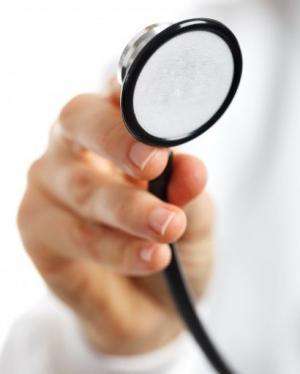Can a "crowd" diagnose better than a physician? The jury is still out

Crowdsourcing a diagnosis may provide answers to some patients with unresolved health problems, but it is unknown how many patients ultimately receive a correct diagnosis using this method, said researchers at Baylor College of Medicine and the Michael E. DeBakey Veterans Affairs Medical Center in a report that appears in the Journal of Medical Internet Research.
"Web-based crowdsourcing could be a novel and relatively accessible way to seek opinions about a medical diagnosis from others, but we do not yet know if these opinions result in a final correct diagnosis for the patient," said Dr. Hardeep Singh, associate professor of medicine at Baylor and chief of the health policy, quality and informatics program at the Center for Innovations in Quality, Effectiveness and Safety (IQuEST) based at the DeBakey VA.
Researchers independently evaluated data from CrowdMed, a company whose crowdsourcing strategy involves seeking the opinions of an online community of people with a variety of educational backgrounds to make a recommendation based on the patient's self-reported symptoms as well as the laboratory and radiology studies they make available to the community. Patients and case-solvers may even interact via the Web. CrowdMed aims to provide rank-orderedsuggestions that patients can discuss with their own physician rather than a single, definitive diagnosis.
There is a small fee required to use CrowdMed, and patients may additionally compensate some of the online "solvers" when their recommendations are particularly helpful.
"Unlike typical second-opinion programs in which a patient's record is examined in a static fashion, CrowdMed can facilitate an interactive exchange of information and advice," said Dr. Ashley Meyer, cognitive psychologist and instructor at Baylor and health services researcher at IQuEST. "For example, CrowdMed members can recommend that a patient discuss an additional test with their personal physician and if the physician agrees to obtain it, the members can incorporate additional information based on the test results into their diagnostic suggestions."
In a study of 397 cases that were completed by CrowdMed over two years, Meyer and her colleagues found that 59.6 percent of patients said they had gained insights from CrowdMed that would lead them closer to a correct diagnosis and 56.5 percent said they thought they would see a decrease in medical expenses.
Before turning to CrowdMed, the patients studied had been looking for a diagnosis for 2.6 years, spent a median of 50 hours researching their problems online, visited five physicians and spent $10,000 in medical expenses. More than half (58.3 percent) of the crowd helping to solve these cases consisted of health care providers or medical students.
However, the researchers do not know which of the 397 patients received correct diagnostic suggestions in the end. For that reason, it is not currently possible to understand how useful the method is for obtaining elusive diagnoses, Meyer said.
Further research needs to evaluate whether or not patients are receiving correct diagnostic advice from this method.
Singh emphasized the need to study the value of diagnostic interventions, citing a recent Institute of Medicine report on missed and delayed diagnoses that concluded that everyone will likely get misdiagnosed in their lifetime.
More information: Crowdsourcing Diagnosis for Patients With Undiagnosed Illnesses: An Evaluation of CrowdMed. Journal of Medical Internet Research. DOI: 10.2196/jmir.4887



















